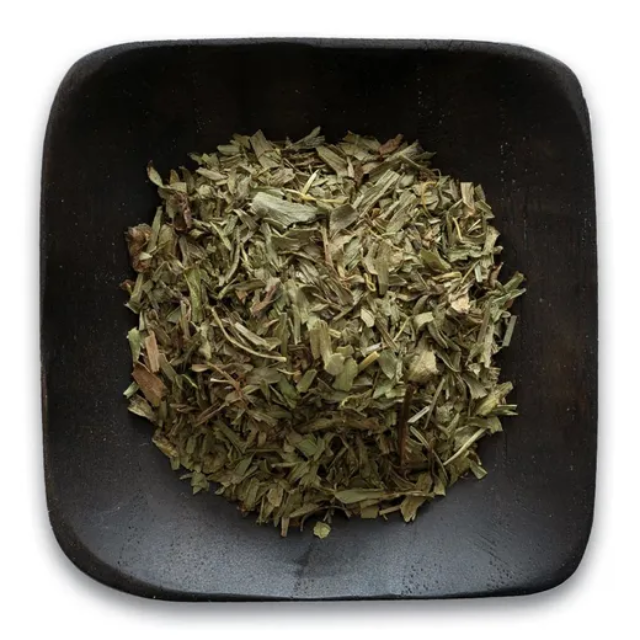Tarragon
Tarragon
Couldn't load pickup availability
Tarragon is an aromatic herb with a slightly sweet, anise-like flavor. Perfect for vinegars, dressings, sauces, and egg dishes, tarragon adds a unique twist to your culinary creations. Its subtle flavor pairs well with chicken, fish, and vegetables. Tarragon is packed with antioxidants and anti-inflammatory compounds, making it beneficial for your health as well as your meals.
Packaging: 4 oz Shaker Mason Jar
History: Tarragon is a perennial herb that has been cultivated for thousands of years, particularly in French and Russian cuisines. It was used in both culinary and medicinal applications, especially for its digestive and appetite-stimulating properties.
Tasting Notes:
Tarragon has a distinct, bold flavor with a sweet, slightly bitter taste and hints of anise (licorice). Its flavor profile is herbaceous with subtle notes of pine and citrus, offering a unique combination of sweetness and spice. It’s a sophisticated herb that can elevate both savory and creamy dishes with its aromatic presence.
Aroma:
The aroma of tarragon is fresh, pungent, and slightly sweet with a noticeable licorice-like fragrance. It has a strong, herbal scent that is both refreshing and slightly peppery, filling the air with its signature, distinctive smell. When crushed, it releases even more of its anise-like, earthy aroma.
Characteristics:
Tarragon is a slender, perennial herb from the sunflower family (Asteraceae) with long, narrow, green leaves. It’s known for its aromatic, sharp flavor that can be both sweet and savory, making it an essential herb in a variety of culinary traditions. The leaves are often used fresh or dried, though fresh tarragon provides a more pronounced flavor. The herb is most commonly used in French and European cuisines, particularly in sauces, salads, and poultry dishes.
Perfect Pairings:
Tarragon pairs beautifully with herbs like chives, parsley, thyme, and rosemary. It complements ingredients such as chicken, fish, eggs, and mushrooms, and is commonly used in sauces like béarnaise and mustard-based dressings. Tarragon also enhances the flavors of creamy dishes, particularly in vinaigrettes, dips, and creamy sauces for vegetables or pasta.
Substitutions:
If you don’t have tarragon, you can substitute with other herbs that have similar aromatic profiles, such as fennel fronds (for the anise-like flavor) or basil (for its fresh, slightly sweet notes). Dill can also be used as an alternative, though it has a lighter flavor. Keep in mind that these substitutes may not replicate tarragon’s boldness exactly, so adjust your seasonings accordingly.
Ideal Uses:
Tarragon is perfect for seasoning poultry, especially in dishes like roasted chicken or chicken salad. It’s also ideal for enhancing sauces, especially béarnaise or hollandaise, and for adding complexity to salad dressings. Tarragon is commonly used in French cooking, particularly in stews, soups, and seafood dishes, and it pairs wonderfully with eggs, vegetables, and creamy dishes.
Processing Method:
Tarragon is most often used fresh, with the leaves carefully picked and chopped to release their aromatic oils. When dried, tarragon loses some of its potency, though it still retains its distinctive flavor. Fresh tarragon is preferred in many dishes, especially in sauces and garnishes, where its full, aromatic flavor is best utilized.
Botanical Name:
Artemisia dracunculus – Tarragon is derived from the Artemisia dracunculus plant, a perennial herb native to Eurasia. It has been used for centuries in cooking and medicinal applications for its bold flavor and health benefits. Tarragon is particularly popular in French cuisine and is a staple in many European kitchens.





